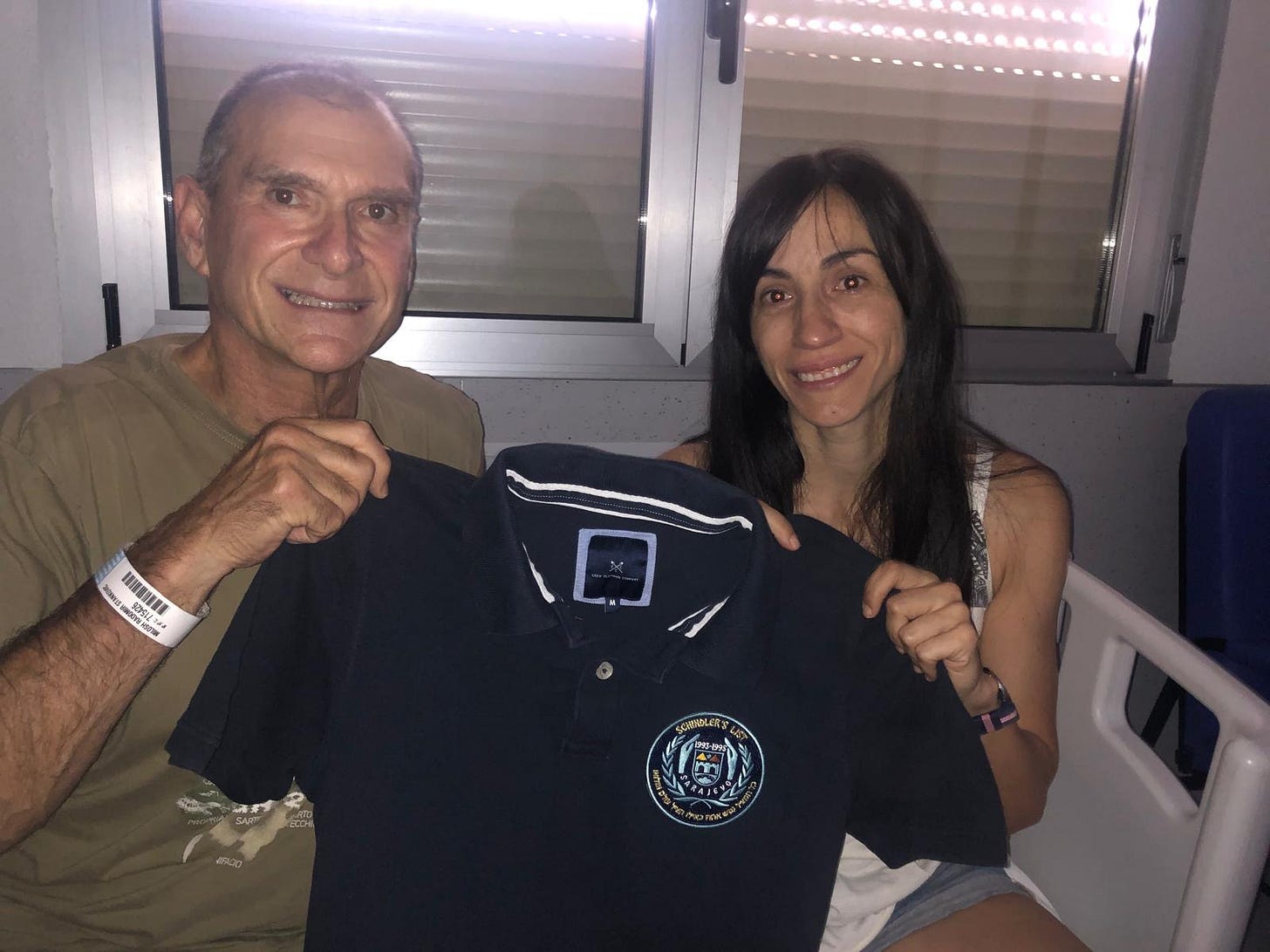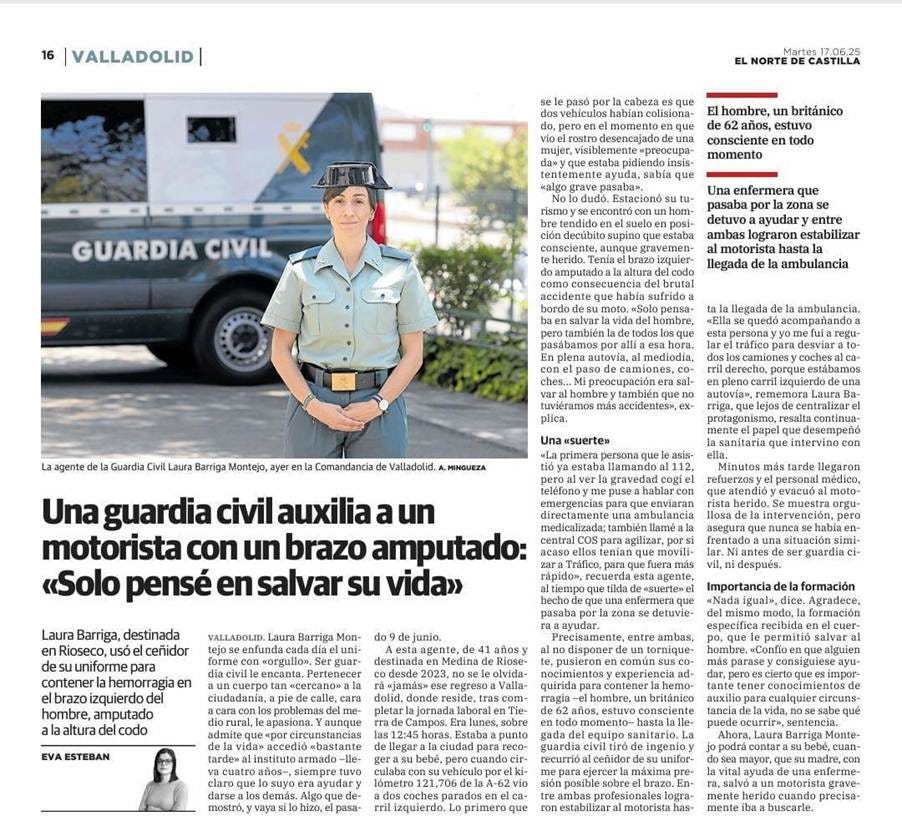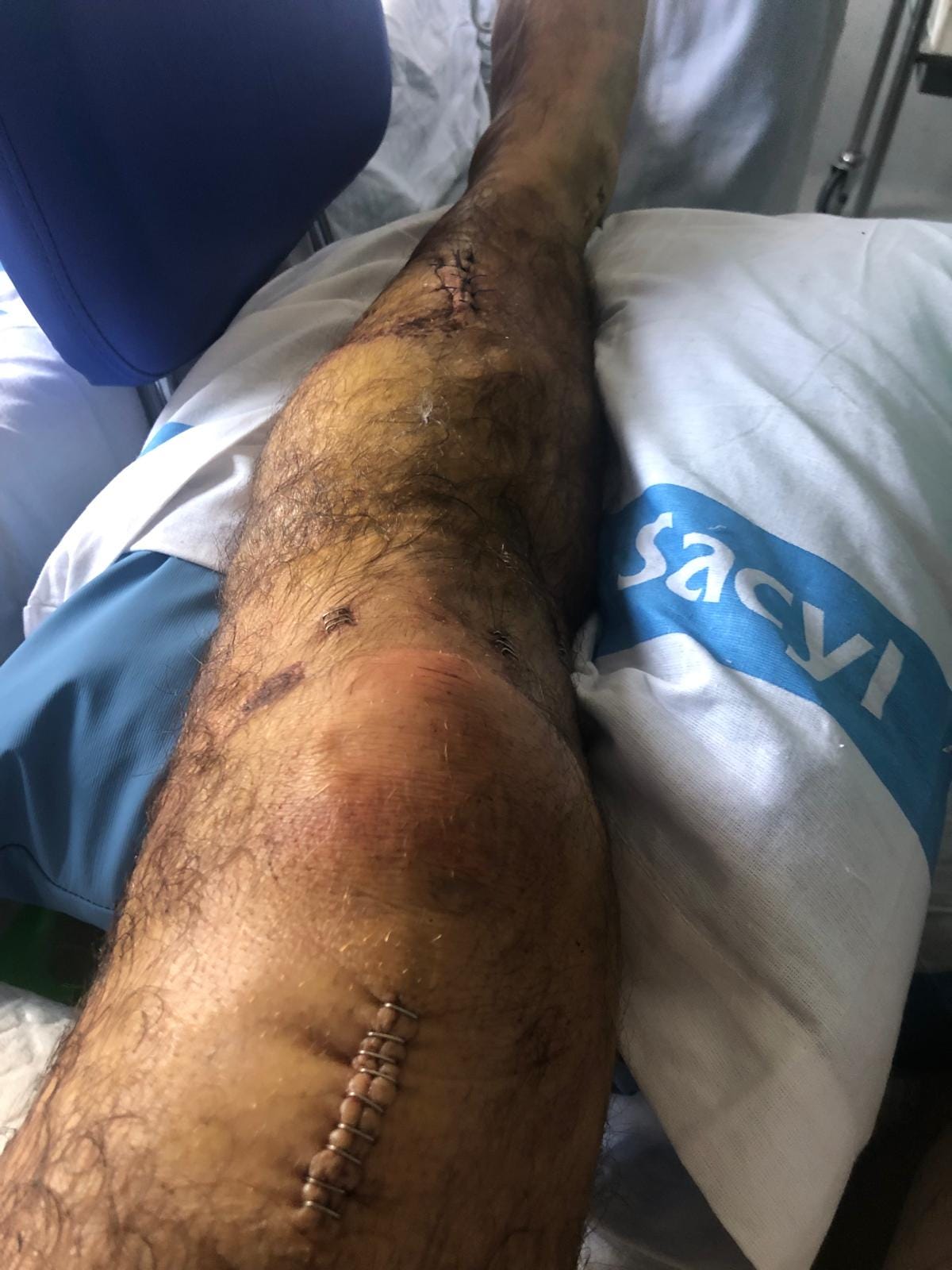Friends will want to know that Milos Stankovic is fighting a new battle, having come off worse in an altercation on his Harley with a central reservation on a Spanish motorway.
I served with Milos during my service in the British Army, in Bosnia and the U.K., and was with him at Staff College in 1997 when he was arrested on suspicion of spying for the Serbs. The pantomime of his arrest and his subsequent bizarre treatment by the British state was powerfully described in his superb account of the Bosnian war – still by far and away the best account of the war that defined the careers of many of us – published in 2000, Trusted Mole.1 Readers will know from this something of his role in Operation Schindler’s List, the secret and entirely unauthorized operation by British soldiers with a conscience to rescue men, women and children from Sarajevo at the height of the Serb siege of the city.2
I was sitting at home a few days ago when I received a message from Milos on WhatsApp:
“Looks like I’ve overstayed my welcome in Valladolid. They’re booting me out 0500 BST on Thursday 26 June. Ambulance to Madrid. Flight to Gatwick with Louise and a nurse. Ambulance to the Devon Polytrauma Unit at Derriford Hospital. ETA, sometime that afternoon. Thence inpatient assessment and a programme of physio/rehab. Louise has spoken to the team there and warned them to stand by their beds and that I’ll be on them like a hawk if their cross infection drills are not 100%. No prisoners!”
Louise, by the way, is Milos’ long-suffering wife.
As I had no idea what Milos was talking about, I replied, fearing some sort of disaster:
“What on earth have you been doing?”
Within seconds a new message popped up. It was a picture of a news report in a Spanish newspaper, with a story about a young Guardia Civil officer who, two weeks, ago, helped save the life of a British motorcyclist on a motorway outside Valladolid.
He was toying with me. Knowing full well that I couldn’t read Spanish, Milos quickly followed up with a translation. The headline is “A Civil Guard woman assists a motorcyclist with an amputated arm: "I only thought about saving his life." The subtitle was even more dramatic:
“Laura Barriga, stationed in Rioseco, used her uniform's belt to stem the bleeding on the man's left arm, amputated at the elbow.”
Blimey! What had happened? At least I knew the madman was still alive! Over the next half an hour the full story emerged from Milos’ hospital bed in Valladolid. Some long messages followed:
Was on a paramotoring course for two weeks in Bornos which is between Cadiz and Seville. Went down on the Harley (ferry Plymouth-Santander) and then bike up to Normandy and recross the Channel at Cherbourg.
Saw Scotty Milne at his skydiving centre in Seville. Haven’t seen him since 1984 in Belize. Left early Monday morning. Three hundred miles later I elected to ram the central reservation of the highway at low velocity to see what would happen. I lost the election.
No major injuries. Light flesh wounds worthy of the Black Knight. ‘Tis but a scratch: severed left arm hacked off above the the elbow (unsavable as a lorry then ran over it) and broken tibia of the left leg.But for the quick-thinking of a young female motorist, I would have died of blood loss. The stump was pumping blood and I couldn’t reach it. She took my belt off and used it as a tourniquet until the ambulance arrived.
While all this was going on I managed to retrieve my phone from the bike and leave a couple of garbled messages on Louise’s phone. She was at work at the Royal Devon and Exeter. At the time I failed to actually give a locstat, possibly because I was unnerved at the sight of my arm bone sticking out and somebody picking up my severed and run-over arm (and wondering if my Rolex was still on it). I was conscious in the ambulance and remember about 20 or so ED crash team hovering over me as they cut away my clothing at the hospital. The lead consultant told me that the arm had been destroyed and couldn’t be reattached and asked for consent to complete the amputation. He said the left tibia had been broken and needed pinning. No other injuries. No gravel rashes (viva Kevlar biking pants!), no hip, knee or ankle injuries.
They reset the leg and then I must have died…because I woke up in this strange greenish place that all paratroopers go to called Valhalla. I was surrounded by seven or eight young giggly twenty-something beautiful Spanish handmaidens who insisted on giving me full body washes. We struck up a great rapport: ‘come back girls you’ve missed a bit’ or ‘girls, is it time for my wash?’ These were the famous Valkyries, the handmaidens of Odin, who escort fallen warriors to Valhalla. Cunningly, they had disguised themselves as ICU nurses to make me feel better.
Also, I must have been in some kind of pre-Valhalla clearing station, possibly on Mount Olympus, because I met Zeus, who was also pretending to be an ICU consultant. But he couldn’t fool me. Zeus is Venezuelan not Greek. I knew he was the real Zeus pretending to be a Venezuelan ICU doctor because he knew everything about me and had ordered a copy of my book and also told me that my family were coming out to visit me. I thought this was a bit odd because how is it possible for the living to go and visit the waiting room? More likely Louise had found out about my regular body washes by the Valkyries and, Nora Batty-like (another Yorkshire ‘lass’) was going to put a stop to it.
Meanwhile, in the real world, a major search and rescue operation had been mounted. Having received a garble message that I had had an accident, was injured but otherwise okay and being taken to hospital, Louise rang Ben Clayton-Jolly in Austria. He set up an ops room on his patio and mounted an operation to locate the mysterious hospital. On Facebook he found a post and photo of Scotty Milne and me which geolocated us on Sunday night in Seville. Working on all possible routes to Normandy he correctly figured out I’d been heading to Bilbao or Bayonne. He assumed a 6am start and average speed of 60mph and concluded, correctly, that I must be in a hospital in Valladolid. A few calls to EU police contacts revealed that a Harley rider and a highway central reservation had indeed had a punch up there at around 12.30. Clever boy, that’s what comes of being a 1 PARA bro.
And that’s how my wife was able to mount an operation to save me from the Valkyries. Dammit Ben, why do you have to be so efficient?
Also, Zeus, is no longer in my good books. He told me it was time to leave. But not for Valhalla. I was going to room 528. Room 528. White. Clean. With a view. And loads of pain as hatchet-faced Frau Klebb-like matrons turn me for scrubbing and sheet changing. Food is excellent, but not tapas. Attention is excellent.
I should have had a titanium rod screwed to my left tibia on Friday. But the anaesthetists were on strike that day so the op was postponed till Monday.The rescue posse came flying in – Ben from Austria, Louise and two of her sisters from UK. I was moved into 528 a few hours before they arrived. The posse has now departed. Louise is left, no doubt to ensure I don’t end up with the Valkyries again. She wasn’t impressed with my stories from Valhalla. She also has a very Yorkshire miner’s daughter approach to reality, “If John McFall can become an astronaut you can fly again.” The Nora Batty gene.
And, Zeus now has a signed copy of my book. How many gods can claim that!
So, I’m on a lot of drugs to fight the pain in an arm that is no longer there. Which is, presumably, why the drugs are having no effect. Because the injury now only exists as a memory. Go figure! The Army Physical Training Corps gym in Aldershot used to sport some sort of nonsensical machismo like ‘Pain is just weakness leaving the body’ emblazoned on one wall. Oh yeah? Good to know!
The photos tell the rest of Milos’ story. He’s a classic paratrooper: completely mad.
Trying to lighten the darkness I quipped:
“Well, at least you’ll now be eligible for Invictus!”
He replied:
“Op a great success. Titanium bolt inserted from above the knee to screw together the bits of the tibia. Zero damage to knee or ankle so full articulation. Weight-bearing in three weeks. Load bearing in 3 months. Tabbing fit 3-5 months. Very lucky.
As for the left arm. If you’re going to lose a limb you’d want it to be your upper non-dominant one. Would have been nice to have kept the elbow joint but I am excited about the advances in robotic /bionic AI prosthesis and all the attachments I can have. Like having a permanent multi-tool.
All in all. Am in pretty good shape with some well defined personal short term goals set.
There’s a fuzzier longer term goal forming that will need some shaping. Being a paraplegic and the first Brit to get my paramotoring pilot’s license and being a vet there’s something around using paramotoring for vet’s physical and mental rehab…and making it a Regt thing. All the contacts to make this happen are already in place. All I need to do is to prove it can be done and we take it from there.”
Of course he will. That’s the Milos I know.

Utrinque Paratus!
Major Milos Stankovic was born in Salisbury, Southern Rhodesia in 1962 – a British citizen with Scottish and Royalist Yugoslav parents, themselves refugees from Yugoslavia. Educated in England, he enlisted in the Parachute Regiment in 1981; the Army sent him to university where he studied Russian at Manchester and in Minsk in the Soviet Union. He has served with the British Army in Belize, Northern Ireland and Africa, and with the UN in post-war Kuwait and Iraq, and two long tours in Bosnia between December 1992 and April 1995. Prior to his arrest at Staff College in October 1997, Milos Stankovic served as a company commander with the 1st Battalion, Parachute Regiment. In Bosnia, for obvious security reasons, he was known as Captain Mike Stanley.
In 2019 one of the UK Special Forces operators, who had participated in the evacuations, commissioned renowned war artist, David Reynolds, to render the Schindler’s List operation in oil on canvas. Reynolds’ 4’x3’ oil depicts one of the last evacuations of an elderly and infirm couple in their eighties conducted on the night of 25th January 1995. It is faithful to those who participated that night and to the atmosphere of the moment. It now hangs in the Warrant Officers’ and Sergeants’ Mess of the operator’s Regiment. A limited edition of prints was produced and distributed to the very few operators who took part in Operation Schindler’s List. Many hundreds of people were saved in this way. For them it was a matter of freedom or death.








I take my hat off to him for attitude if nothing else.